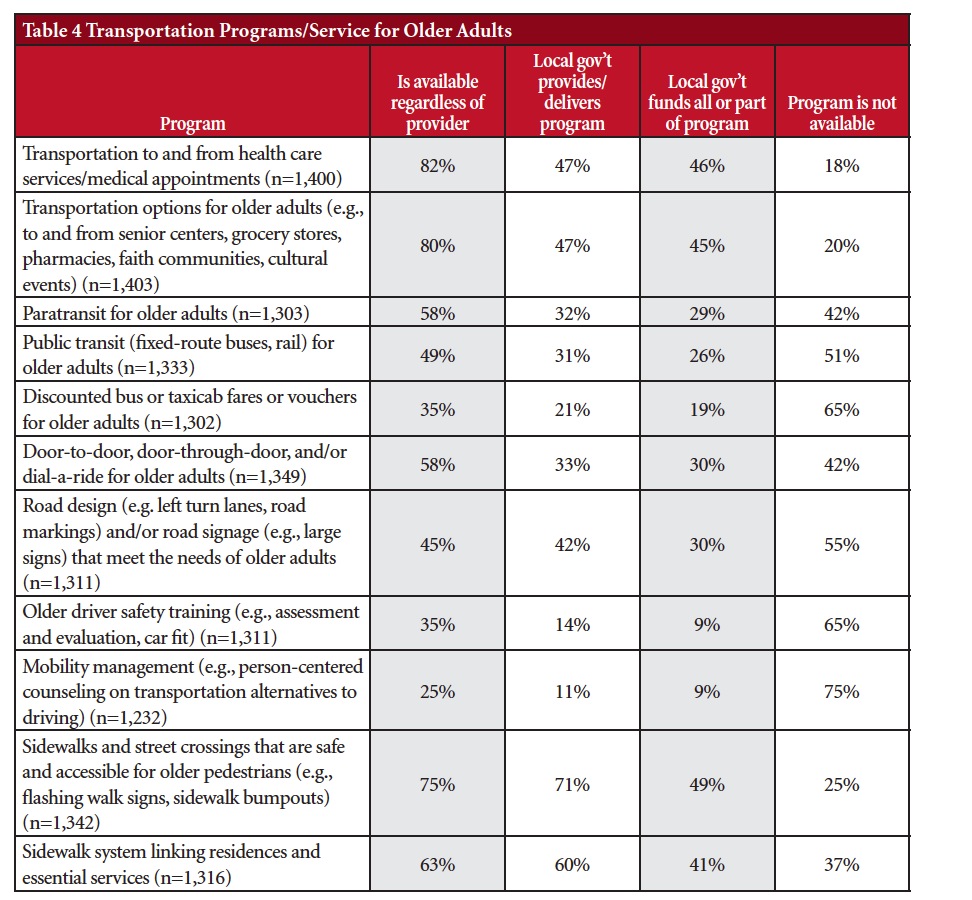NATIONAL ASSOCIATION OF AREA AGENCIES ON AGING
Executive Summary
Two powerful phenomena have come face-to-face this year, demanding urgent attention. One is demographic: the rapid and dramatic aging of the U.S. population. In 2011, in communities across the country, the leading edge of the Baby Boom generation reached age 65. By 2030, more than 70 million Americans—twice the number in 2000—will be 65 and older. At that time, older adults will comprise nearly one in five Americans.
The other phenomenon is the Great Recession, which began officially in December 2007. In the U.S., despite initial signs of recovery, it continues to heavily influence policy, programs and planning. States continue to cut budgets, and municipalities are also financially distressed. As a result of the recession, spending for aging supports and services is shrinking —precisely at the time it is needed most.
With the convergence of these two forces, critical concerns come to the fore. How prepared are communities across America to tap the vast potential of the oncoming wave of older adults? How are policies in all dimensions of community life being adapted to support these individuals as they age in place, particularly during the most advanced years of their lives? What initiatives are underway to address the “maturing” of America?
To answer these questions, with support from MetLife Foundation, and in partnership with the International City/County Management Association (ICMA), American Planning Association, National Association of Counties, National League of Cities, and Partners for Livable Communities, the National Association of Area Agencies on Aging (n4a) led a nationwide survey: “The Maturing of America—Communities Moving Forward for an Aging Population.” The survey, administered in 2010 by ICMA, was intended to assess progress against benchmarks established in the first “Maturing of America” survey conducted in 2005. In both cases, the findings were eye-opening.
Key Finding: n4a’s report on the first survey, issued in 2006, found that, while many communities had some programs to address the needs of older adults, few had undertaken a comprehensive assessment to create a “livable community” for all ages, including the diverse population of those age 65+. The new survey reveals only limited progress in advancing this goal. Indeed, as a result of the severe economic challenges associated with the recession, most communities have been able only to “hold the line”— maintaining policies, programs and services already established. Thus, they have not been able to move forward to the degree needed to address the nation’s current “age wave.” The survey captures encouraging steps forward in some areas, and retrenchment in others. But overall, it appears that many communities are struggling to maintain the status quo.
We call upon policymakers at all levels of government, but particularly at the local level, to move forward energetically—even if incrementally—to address the challenges at hand. We urge local community leaders—working with Area Agencies on Aging, universities, businesses, nonprofit organizations, other public sector entities and older adults themselves—to become champions and change agents who can break through the current stalemate. We hope that this report, which spotlights the ways some communities are doing just that, will inspire fresh momentum.
Download full version (PDF): The Maturing of America
About the National Association of Area Agencies on Aging
www.n4a.org
“The National Association of Area Agencies on Aging (n4a) is the leading voice on aging issues for Area Agencies on Aging and a champion for Title VI Native American aging programs. Through advocacy, training and technical assistance, we support the national network of 629 AAAs and 246 Title VI programs.”








 RSS Feed
RSS Feed